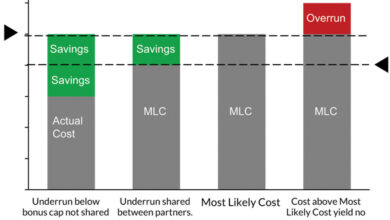Drilling & Completion Tech Digest

Survey: Process optimization, predictive maintenance among data-driven innovations having top impact
In the newest edition of DNV’s Energy Industry Insights report, senior oil and gas professionals cited “improving operational performance, efficiency and safety” as their top priority. A total 62% of survey respondents said they expect to increase investments in energy efficiency in the year ahead, but that is just one dimension. For example, 78% say their organization will seek to achieve greater standardization of its tools, methodologies and processes to reduce costs over the year ahead.
Many organizations are also using digital technologies and data-driven strategies to reduce costs and streamline operations, meaning the second-ranked priority – “developing and adopting technological innovations” – can support the first priority. Organizations are already yielding results in this domain: “Optimizing processes” was deemed the area of data-driven innovation that is making the most significant impact on organizations.
Looking more specifically at where the industry is in terms of developing digital technologies, 50% of respondents said sensors, Internet of Things and remote communications were live/advanced in their organization, 25% said they were being planned or piloted, and 10% said there was no existing or planned activity.
For digital automation and/or control networks, 40% reported it as being live/advanced in their organization, 30% said it was being planned or piloted, and 10% said there was no existing or planned activity.
For digital twins, 21% said it was live/advanced, 31% said it was being planned/piloted, and 21% said there was no existing/planned activity.
For AI/machine learning, only 15% said it was live/advanced, but 47% said it was being planned/piloted, and 19% said there was no existing or planned activity.
For remote survey/witnessing technologies, 38% said it was live/advanced, 30% said it was being planned or piloted, and 14% said there was no existing or planned activity.
DNV’s survey was taken by 442 senior oil and gas professionals from all parts of the sector, from vertically integrated national and international oil companies to specialists from every part of the value chain.
Click here to access DNV’s report.
Middle East project sees Halliburton completing 12 zones in a single well
In June, Halliburton announced it had successfully installed a 12-zone intelligent completion for an operator in the Middle East. This installation doubles the number of zones Halliburton had previously completed in a single well.
The potential risk of water breakthrough at the early stages of production had necessitated a well completion design that would curtail water encroachment. Halliburton recommended a 12-zone intelligent completion that included the SmartPlex downhole control system paired with SmartWell electro-hydraulic interval control valves (ICVs) to provide a better response to drawdown and water ingress. This would maximize productivity and improve well performance. In addition, the completion design included fiber optics and Opsis gauges to monitor and transmit well information to surface.
This extended-reach completion had more than 10,000 ft of 6 5/8-in. lateral section (total measured depth 21,555 ft). It was delivered as designed, with no reported incidents or HSE events. Following installation, the team also verified the ICVs, monitoring and fiber-optic devices continued to function properly.
Australian 5-well subsea batch campaign marks milestone for SeaCure
In May, Expro celebrated the completion of the 100th job globally of its SeaCure cementing technology. It was completed as part of a project in Australia consisting of a five-well subsea batch campaign.
SeaCure played a pivotal role in maintaining the quality primary cementation of the conductors while mitigating a number of risks associated with placement of the cement slurry. This was achieved through Expro’s proprietary stabbed-in inner string technique. By utilizing the SeaCure system and implementing post-cementing circulation via the inner annulus until slurry curing was complete, Expro engineered the risk to the minimum, providing reliable installation of the top holes.



